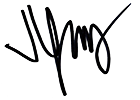A bravura performance is, by its very nature, exhilarating to behold. And J.K. Simmons, as the despotic music instructor Terrence Fletcher in Whiplash, indeed gives a bravura performance. He spits verbal abuse like a beatnik R. Lee Ermey, demonstrates a Hannibal Lecter-like capacity for psychological torture, and even attempts to decapitate a student by hurling a cymbal discus-style at the kid’s head.
Rarely, though, does a bravura performance by a member of the post-production crew take center stage the way it does in Whiplash. From the very first frames, your virtuosic editing asserts itself as a core component of writer/director Damien Chazelle’s aesthetic—and, as the film progresses, it seems to take on a life of its own.
The analogy is almost too easy: the editor as drummer, keeping time, setting pace. But in this film, it’s particularly apt. You never rush, never lag. You’re always right on tempo, even when that tempo is completely syncopated. Like the great jazz musicians around whom Whiplash builds much of its mythology (to the misguided objections of some critics), you seem to be improvising a visual solo that runs in phrases and melodies above and beneath and through the raw material provided by writer/director Damien Chazelle and cinematographer Sharone Meir. As Fletcher puts his studio band through the paces, the countless hours of practice are compressed into little mini-montages of close-cropped images: instrument cases are opened and closed, reeds are drained, callouses drip blood. The unease before a big performance is further constricted by similarly disorienting bursts: sheet music is marked, drum keys crank on tension rods, a pair of lips exhales.
Sure, these are stylistic (perhaps superfluous) embellishments. But in a jazz performance, no one begrudges such flourishes; it’s what the art form is all about. It’s those unexpected notes that make a thing sublime, unique. Likewise, in Whiplash, the edits occur where you don’t expect them, and it’s in this polyrhythmic interplay between the images – close and wide, dark and light, fast- and slow-motion – that the film elevates itself.
But you don’t just express your proficiency by showing off in those big moments. Early in the film, when drumming prodigy Andrew Neimann finds himself on an awkward first date, we get a quick glimpse beneath the table as his companion gently brushes her foot against his. For all the bombast elsewhere, this cut is almost invisible; you can hardly believe you weren’t looking at their shoes the whole time.
The film itself is about bravura performances, and, as you might expect, it culminates with one (the way it unfolds, though, is quite unexpected, so that’s not quite a spoiler). What makes Whiplash unique in the genre (if one can indeed call the journey-of-the-arts-prodigy narrative its own genre) is the honesty with which it addresses the messy (sometimes bloody) process by which greatness is achieved.
“I was there to push people beyond what's expected of them,” Fletcher tells Neimann. “There are no two words in the English language more harmful than good job.” I wonder if you had a similar relationship with any of the mentors you worked with early in your career. Maybe David Milch during your time on Deadwood. Or maybe John Axelrad, who you’ve assisted on numerous films, including two James Gray pictures. Was it one of them who pushed you beyond what was expected of you as an editor? Have either of them ever chucked a hard drive of raw footage at your head? Whatever the case, you’ve certainly found a way to push yourself. And the result is a singular achievement that even a chronically dissatisfied psychopath like Terrence Fletcher could be proud of.
Sincerely,

Jared







